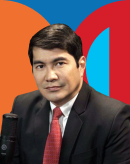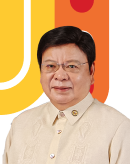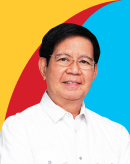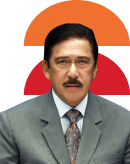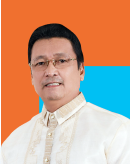24 hours that changed Philippine history
(Editor’s Note: Here is a timeline of the last hours of Sen. Benigno “Ninoy” Aquino Jr.):
BOSTON, 8 P.M., AUG. 20 (8 A.M., AUG. 21, PHILIPPINE TIME)
From Taipei, Ninoy calls his wife, Cory, who is in Boston. He says he will soon be leaving for the airport for his final trip to Manila. He tells her he has written letters to her and to each of their five children.
Cory tells him that Armed Forces Chief of Staff Gen. Fabian Ver has warned airlines not to bring in Ninoy, else, they will be ordered to fly him back to his place of origin.
Ninoy decided to go home after three years of self-exile in the United States despite warnings, especially from then First Lady Imelda Marcos, to postpone his arrival.
Ninoy had told Salvador “Doy” Laurel, former assemblyman of the Interim Batasang Pambansa and president of the opposition party Unido, that Imelda had offered to take Ninoy home with her. When he refused, she warned him: “You better not come home because some of our boys may just kill you, believing it would make us happy, although we would never order it.”
On Aug. 2, when Laurel told Imelda that Ninoy would arrive on Aug. 7 (the original planned date of arrival), she told him: “That’s impossible. If he comes, he’s dead.”
Always a Filipino
Despite the warnings, Ninoy was not going to change his mind. He was going home, telling Cory that they could not refuse him entry as he is, was and always would be, a Filipino.
And he told Cory that it would be most likely that he would be re-arrested and brought back to Fort Bonifacio.
Ninoy was the first opposition leader to be arrested when Marcos declared martial law in September 1972 and was a political prisoner for seven years and seven months.
Ninoy was Marcos’ political archrival and was believed to have been a shoo-in the next presidential election had Marcos not declared martial law.
In a story published in the Inquirer, Cory said that in the first quarter of 1983, Ninoy had learned about the country’s deteriorating political situation and rumors of Marcos’ poor health. Ninoy believed it was imperative for him to speak to Marcos and convince him to bring back democracy to the country, before such a return would be made impossible with the release of “extreme forces.”
Roundabout way
With the security concerns, Ninoy was coming home in a roundabout way. He left Boston on Aug. 13, 1983, for Los Angeles, then to Singapore, next to Malaysia, where he had friends in the royal family, to Hong Kong, and to Taipei. And from Taipei to Manila.
Taipei is his final stopover because the Philippines has severed diplomatic ties with Taiwan. This made him feel more secure; the Taiwan authorities could pretend they did not know of his presence. And there are also some Taiwanese friends who could take care of him.
9:00 A.M., AUG. 21
Ninoy meets with journalists who are to travel with him to Manila. He is in a bright mood as he notes that the white safari suit he is wearing with his initials embroidered on the shirt pocket was the same one he wore when he left the Philippines for the United States three years before.
Ninoy puts on a pair of sunglasses, saying he will travel disguised as a tourist. Sandra Burton, bureau chief of Time Magazine based in Hong Kong, was designated in the meeting the night before with foreign journalists as his girlfriend and decoy.
She would ride with him in the car, as journalists would have it, and use the opportunity to interview him—on his relations with Marcos, on the threats to his life, on the bases issue. Ninoy tells Burton he believes in a strong president with checks in a free judiciary and a free press.
10:00 A.M.
Ninoy arrives at Chiang Kai Shek International Airport for his flight to Manila on China Airlines (CAL) Flight 811. He is to be accompanied by Ken Kashiwara, ABC News correspondent and husband of Ninoy’s younger sister, Lupita.
Burton and other foreign reporters who have flown in mostly from the United States—20 of them—are to also accompany Ninoy on his trip to Manila.
Ninoy checks in using a fake passport for “Marcial Bonifacio”—Marcial, from the martial law, and Bonifacio, from the name of the prison where he was detained.
The Aquino family—Ninoy’s mother, Dona Aurora, siblings Butz, Tessie and Lupita—and opposition leaders led by Salvador Laurel arrive at Manila International Airport (MIA).
Also in the welcome party are Joker Arroyo, Ninoy’s counsel, and former Senators Lorenzo Tañada, Eva Estrada Kalaw and Francisco “Soc” Rodrigo.
Laurel says they cannot enter the arrival area as all four doors to it are padlocked. The entire MIA, he said during the Agrava hearing in January 1984, has been taken over by the Aviation Security Command (Avsecom), with 1,999 soldiers securing the airport.
Tight security
Security is tight. Journalists and welcomers can only stay at the airport Visitor’s Lounge, at the far end of the airport’s left-wing side. Entry to the arrival area is restricted to regular airport reporters.
Ninoy’s family and supporters are preparing for a triumphant return, the first step to victory for the opposition against Marcos. They have tied yellow ribbons around trees near the Aquino home on 25 Times Street, Quezon City, and on the trees along Roxas Boulevard.
There are also hundreds of people outside the airport terminal building to welcome Ninoy, wearing yellow head and armbands. They wave welcoming placards and chant, “Ninoy, Ninoy.”
11:55 A.M.
After some delays, CAL Flight 811 takes off. Ninoy is in the middle group of seats in the economy section. The foreign journalists take the opportunity to interview him during the flight. Ninoy talks at length on the possibility of being assassinated. He says there is a plot to kill him but that is a risk every politician has to take.
Minutes before the plane lands, he puts on a bullet-proof vest and prays the rosary.
He uncannily tells Kashiwara, “I’m okay. I’m protected here, but if they hit me in the head, I’m a goner.”
1:05 P.M.
Ninoy’s plane lands at the Manila International Airport (since renamed after him as Ninoy Aquino International Airport). The passengers are told over the plane’s public address system that nobody is to get off until further notice.
Then, men in soldiers’ uniform board the plane. The boarding party includes 2nd Lt. Jesus Castro, Sgt. Claro Lat, TSgt. Filomeno Miranda, Sgt. Arnulfo de Mesa, CIC Mario Lazaga and CIC Rogelio Moreno. They seem friendly as they approach Ninoy, who shakes hands with them. They take Ninoy out of a first class exit and down a special ramp to the tarmac.
At the front portion of the aircraft are at least a dozen Army security people carrying M16s.
Just six seconds after Ninoy begins to descend the 19-step service stairs, a shot rings out, followed by five other shots.
John McLean reported in the South China Morning Post that pandemonium broke out on the plane. “Everybody in the aircraft was screaming at the top of their lungs—all these women on the plane starting screaming.”
According to the findings of the Agrava board, the first shot killed Ninoy, who was shot at close range at the back of his head. The board also found that he was shot not on the tarmac but on the last step of the service stairway.
The other shots kill Galman, the alleged assassin of Ninoy.
(Metrocom chief Propero Olivas said in the now defunct Times Journal banner story “Aquino shot dead” on Aug. 22, 1983, that Aquino was being escorted to an Avsecom van when the gunman, dressed in the blue uniform of an airport maintenance man, slipped through the security cordon and shot him from behind with a cal. 357 Smith and Wesson Magnum revolver.”)
2:00 P.M.
From the MIA, Ninoy is brought by soldiers in the Avsecom van to the Army General Hospital at Fort Bonifacio. He is pronounced “dead on arrival.”
Ken Kashiwara comes to the VIP Lounge and cries, “Ninoy was shot! Ninoy was shot!”
Doña Aurora nearly faints and is speechless for sometime before bursting into tears. People in the room cry.
Laurel rushes outside the arrival area, now teeming with people. They cheer, thinking Aquino is coming out of the terminal. They are chanting, “Ninoy, Ninoy.”
A grave-faced Laurel mounts the iron railing and calls for silence. He tells them that Ninoy has fulfilled his promise to arrive. “He came back but you may not see him … I heard that Senator Aquino has been shot and that he was hit and fell … Another person was hit. Be cool, be cool.”
He also tells the hushed crowd that two passengers saw Ninoy slumped on the ground but “it is not known if he is alive. Let us pray for him.”
He then directs the people to proceed to the Redemptorist Church in Baclaran, where a prayer rally is held.
In Boston, Ballsy, Ninoy’s eldest daughter, answers a call from a Kyodo news agency representative in New York and is shocked when asked if it is true that her father has been killed at the MIA. Reporters from United Press International and Associated Press also call to ask for verification.
Cory and her children cry when a good friend of the Aquinos, Member of Parliament Shintaro Ishihara of Japan, calls Cory from Tokyo and tells her that Kiyoshi Wakamiya, one of the journalists who traveled with Ninoy from Taipei to Manila, has called him from Manila and verified the shooting report.
4:00 p.m.
Three hours after the shooting, the Marcos government is silent. It does not confirm whether Ninoy has been shot or whether he is alive.
10 P.M.
The autopsy of the remains of Ninoy is done by Dr. Bienvenido D. Muñoz, NBI medico-legal officer, at the morgue of Loyola Memorial Chapel. Among those present are doctors from UP College of Medicine, Cardinal Santos Hospital and Philippine Heart Center invited by the Aquino family to observe the proceedings. His findings: Ninoy died of “brain laceration and intracranial hemorrhage secondary to gunshot wound in the head”—due to a bullet fired into his head from behind.
The autopsy of the corpse of Galman—still then unidentified and described simply as “Unknown Adult Male”—is done by another NBI medico legal officer at the morgue of the PC Crime Laboratory. The cause of his death is “shock secondary to multiple gunshot wounds
Ninoy’s family, friends and political colleagues had planned for a happy reunion. A sister had prepared dinner for 500 people and supporters provided 10,000 sandwiches. And according to an AP report, he was supposed to be serenaded with songs.
Instead, there is grief and anger at 25 Times St., which was to be a house of yellow ribbons, but the ribbon that flutters on the door is black.
Now and then sounds of wailing come from the kitchen. The voluble former Sen. Jose Diokno is too stunned to say anything.
MONDAY, AUG. 22
The day is sunny and bright.
6:00 A.M.
Ninoy’s body is finally brought to the Aquino residence at 25 Times St.
8:00 A.M.
At first, hundreds come. Then thousands more from all walks of life come to pay homage. Ninoy’s young nephews and nieces have to ask people to fall in line.
With somber faces and in silent grief, the people file past Ninoy’s coffin, a simple, open wooden casket. They see Ninoy lie in state in his bloodstained white suit.
It is the suggestion of Ninoy’s mother not to change Ninoy’s bloodstained clothes and leave his face as it is, saying, “I want the world to see what they did to my son.”
The unraveling of the Marcos dictatorship has begun.
Source: Reports of the Fact-Finding Board on the Assassination of Senator Benigno S. Aquino Jr., Impossible Dream: The Marcoses, the Aquinos, and the Unfinished Revolution by Sandra Burton, PCIJ and Inquirer Archives























